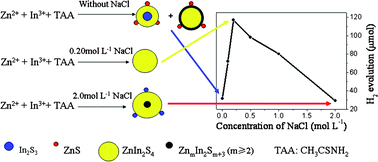
Zn–In–S composites have been synthesized by a simple NaCl-assisted hydrothermal method by researchers from Nanchang University and Lanzhou Institute of Chemical Physics of the CAS.
The products obtained by the hydrothermal method are a single ZnIn2S4 or a composite of ZnIn2S4, ZnmIn2Sm+3, ZnS and In2S3, depending on the NaCl concentration. The samples consist of microspheres and sheet-like grains with marigold-like superstructure. The grain size of the products increases and the specific surface area decreases with an increase of the NaCl concentration. The ZIS-0.20 with ZnIn2S4 composition and a larger specific surface area exhibits the highest photocatalytic activity for hydrogen evolution and good stability. Pt particles deposited on the photocatalyst with diameters of ca.1–4 nm greatly improve the photocatalytic activity.
This work is important to understand complex hydrothermal processes for the preparation of multi-component sulfides.
The work has received support from the National Basic Research Program of China, the National Nature Science Foundation of China, the Program for Changjiang Scholars and Innovative Research Team in University, the Natural Science Foundation of Jiangxi, China, and the Research Fund of Education Ministry of Jiangxi, China. The findings have been published in CrystEngComm (CrystEngComm, 2011, 13, 4770–4776).
CrystEngCommPaper
